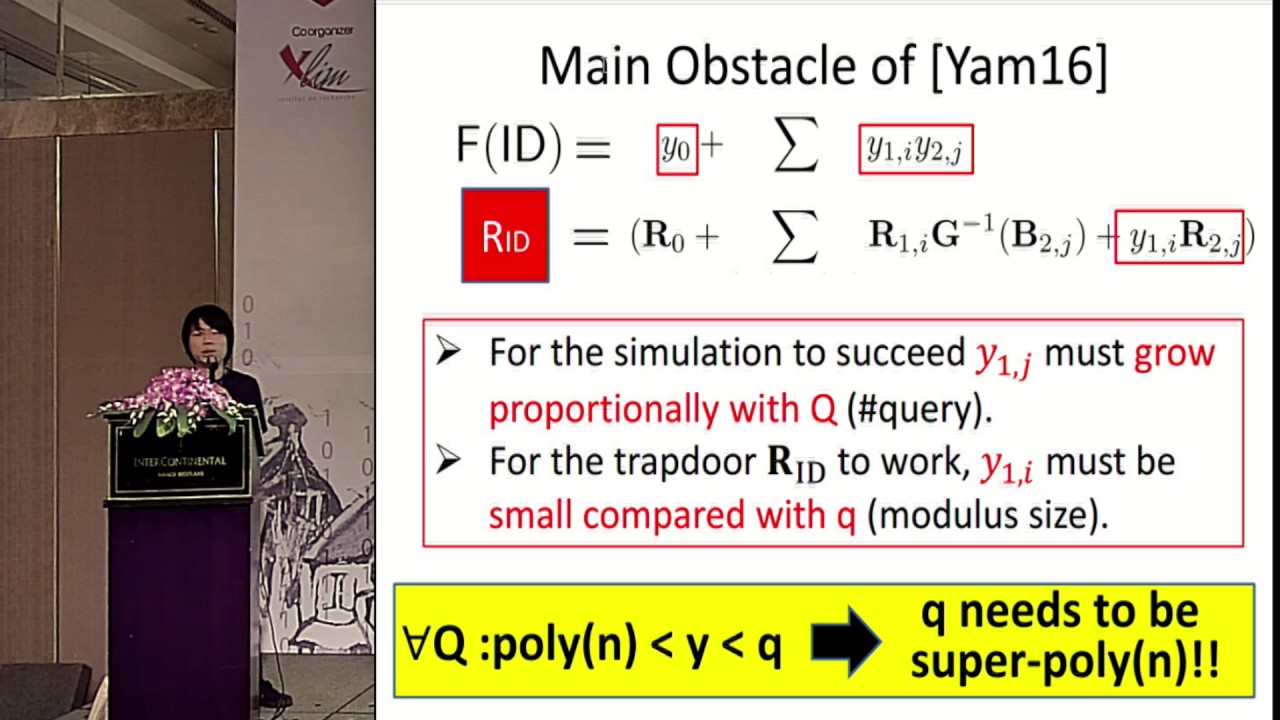Welcome to the resource topic for 2016/843
Title:
Partitioning via Non-Linear Polynomial Functions: More Compact IBEs from Ideal Lattices and Bilinear Maps
Authors: Shuichi Katsumata, Shota Yamada
Abstract:In this paper, we present new adaptively secure identity-based encryption (IBE) schemes. One of the distinguishing property of the schemes is that it achieves shorter public parameters than previous schemes. Both of our schemes follow the general framework presented in the recent IBE scheme of Yamada (Eurocrypt 2016), employed with novel techniques tailored to meet the underlying algebraic structure to overcome the difficulties arising in our specific setting. Specifically, we obtain the following: - Our first scheme is proven secure under the ring learning with errors (RLWE) assumption and achieves the best asymptotic space efficiency among existing schemes from the same assumption. The main technical contribution is in our new security proof that exploits the ring structure in a crucial way. Our technique allows us to greatly weaken the underlying hardness assumption (e.g., we assume the hardness of RLWE with a fixed polynomial approximation factor whereas Yamada’s scheme requires a super-polynomial approximation factor) while improving the overall efficiency. - Our second IBE scheme is constructed on bilinear maps and is secure under the 3-computational bilinear Diffie-Hellman exponent assumption. This is the first IBE scheme based on the hardness of a computational/search problem, rather than a decisional problem such as DDH and DLIN on bilinear maps with sub-linear public parameter size.
ePrint: https://eprint.iacr.org/2016/843
Talk: https://www.youtube.com/watch?v=pZBxPpwGg0k
Slides: https://iacr.org/cryptodb/archive/2016/ASIACRYPT/presentation/27887.pdf
See all topics related to this paper.
Feel free to post resources that are related to this paper below.
Example resources include: implementations, explanation materials, talks, slides, links to previous discussions on other websites.
For more information, see the rules for Resource Topics .
